The MSI MEG Ai1000P PCIe5 is an impressive PSU, not only because of its exterior design, but mostly because of its high performance. The cherry on top: it is ATX 3.0 and PCIe 5.0 ready, so you will be as future proof as it gets, if you can afford its high price tag.
Contrary to Gigabyte, which has a mediocre presence in the power supply market, to put it mildly, MSI does pretty well, especially if we take into account that it is still new to this market. The MEG Ai1000P PCIe5 is one of the first 1000W units with ATX v3.0 and PCIe 5.0 support, and although the latest NVIDIA 4090 graphics cards don’t require “special” PSUs, it is still way better to use native 12VHPWR connectors instead of adapters. Moreover, the PSU usually outlives several CPU and GPU generations, so it is ideal to be as future-proof as possible.
The MEG Ai1000P PCIe5 uses a semi-digital CWT platform with the codename CTT. This is a high-end design, thus expensive, so MSI asks for 280 dollars for this product. The essential rest features include a USB 2.0 connection through which you can monitor and control the PSU through the Gaming Intelligence application. Besides adjusting the fan speed, you can toggle on/off the multi-rail mode and check all voltage rails. It is interesting when a PSU provides control and monitoring capabilities, although most users probably won’t bother much with the corresponding app. Despite the 160mm depth, typical for today’s standards, MSI decided to equip the PSU with a 120mm fan, which will make more noise to push the same amount of air as a 140mm fan. That said, the fan is of extremely high-quality. Lastly, the ten-year warranty is on par with the competition’s offerings. This MSI PSU has several tough opponents to meet, like the Corsair HX1000i, the Seasonic Prime 1000 Platinum, and the EVGA 1000 P6, but it also has an ace up to its sleeve. It is the only one supporting the ATX v3.0 spec and with a PCIe 5.0 connector.
- Manufacturer (OEM): CWT
- Max Power: 1000W
- Cybenetics Efficiency: [115V] Platinum (89-91%)
- 80 Plus Efficiency: Platinum
- Noise: Cybenetics Standard++ (30 – 35 dBA)
- Compliance: ATX12V v3.0
- Alternative Low Power Mode support: Yes
- Power 12V: 1000W
- Power 5V + 3.3v: 120W
- Power 5VSB: 15W
- Cooling: 120mm Hydraulic Bearing Fan (PLA12025S12H)
- Semi-Passive Operation: Yes
- Modular Design: Yes (Fully)
- High Power Connectors: 2x EPS (2x cables), 8x PCIe 6+2 pin (7x cables), 1x PCIe 12+4 (600W)
- Peripheral Connectors: 16x SATA (4x cables), 4x 4-pin Molex (single cable)
- ATX/EPS Cable Length: 600/710mm
- Distance between SATA connectors: 150mm
- Distance between 4-pin Molex connectors: 150mm
- In-cable capacitors: No
- Dimensions (W x H x D): 150 mm x 85 mm x 160 mm
- Weight: 1.99 kg (4.39 lb)
- Warranty: 10 years
Product Photos
The exterior design is appealing, thanks to the gold pieces on top and the sides. You can remove the latter if you want. Although it looks nice, I prefer not to have the top gold part to provide clear space for a larger fan.
Cables
| Modular Cables | ||||
| Description | Cable Count | Connector Count (Total) | Gauge | In Cable Capacitors |
|---|---|---|---|---|
| ATX connector 20+4 pin (600mm) | 1 | 1 | 16-20AWG | No |
| 4+4 pin EPS12V (710mm) | 2 | 2 | 18AWG | No |
| 6+2 pin PCIe (600mm) | 6 | 6 | 16AWG | No |
| 12+4 pin PCIe – 600W (610mm) | 1 | 1 | 16-24AWG | No |
| 2x 6+2 pin PCIe (610mm) | 1 | 2 | 18AWG | No |
| SATA (500mm+150mm+150mm+150mm) | 4 | 16 | 18AWG | No |
| 4 pin Molex (500mm+150mm+150mm+150mm) / FDD (+150mm) | 1 | 4 / 1 | 18-20AWG | No |
| USB Cable Mini to Type A (610mm) | 1 | 1 | 24-28AWG | No |
| USB Mini to Motherboard Header Cable (590mm) | 1 | 1 | 24-28AWG | No |
MSI provides a ton of connectors, and many users will be thrilled with the individually sleeved cables. All cables are long enough, and the distance between the peripheral cables is adequate at 150mm.
The 12VHPWR connector typically should be rated at 450W, but its sense pins are set for 600W. Although this goes against the ATX v3.0 spec’s guidelines, most brands and manufacturers will still proceed like this because it is easier for their inventory.
Protection Features
| OCP (Cold @ 26°C) | 12V: 102.2A (122.64%), 11.927V 5V: 29A (131.82%), 5.046V 3.3V: 28.4A (129.09%), 3.311V 5VSB: 4.8A (160%), 4.993V |
| OCP (Hot @ 44°C) | 12V: 101.4A (121.68%), 11.906V 5V: 28.8A (130.91%), 5.057V 3.3V: 27.4A (124.55%), 3.324V 5VSB: 4.7A (156.67%), 4.989V |
| OPP (Cold @ 28°C) | 1223.42W (122.34%) |
| OPP (Hot @ 43°C) | 1223.42W (122.34%) |
| OTP | ✓ (168°C @ 12V Heat Sink) |
| SCP | 12V to Earth: ✓ 5V to Earth: ✓ 3.3V to Earth: ✓ 5VSB to Earth: ✓ -12V to Earth: ✓ |
| PWR_OK | Proper operation |
| NLO | ✓ |
| SIP | Surge: MOV Inrush: NTC Thermistor & Bypass relay |
All OCP triggering points are set correctly, and the same applies to OPP. A vital advantage of digital controllers is that they allow for highly precise protection feature settings.
Part Analysis
| General Data | – |
| Manufacturer (OEM) | CWT |
| Platform | CTT |
| PCB Type | Double Sided |
| Primary Side | – |
| Transient Filter | 6x Y caps, 2x X caps, 2x CM chokes, 1x MOV |
| Inrush Protection | NTC Thermistor & Relay |
| Bridge Rectifier(s) |
2x GBJ2506 (600V, 25A @ 100°C)
|
| APFC MOSFETs |
2x Infineon IPA60R099P6 (600V, 24A @ 100°C, Rds(on): 0.099Ohm) &
1x SYNC Power SPN5003 (to reduce no-load consumption) |
| APFC Boost Diode |
2x Infineon IDH08G65C6 (650V, 8A @ 145°C)
|
| Bulk Cap(s) | |
| Main Switchers |
4x Alpha & Omega AOTF29S50 (500V, 18A @ 100°C, Rds(on): 0.15Ohm)
|
|
IC Drivers |
|
| Digital APFC Controller |
Texas Instruments UCD3138A
|
| Digital Resonant Controller | Texas Instruments UCD3138A |
| Topology |
Primary side: Semi-Digital, Interleaved PFC, Full-Bridge & LLC converter
Secondary side: Synchronous Rectification & DC-DC converters |
| Secondary Side | – |
| +12V MOSFETs | 6x Infineon BSC014N06NS (60V, 152A @ 100°C, Rds(on): 1.45mOhm) |
| 5V & 3.3V | DC-DC Converters: 6x PWM Controller(s): no info |
| Filtering Capacitors | Electrolytic: 5x Nippon Chemi-Con (105°C, W), 1x Nichicon (2-5,000h @ 105°C, HD), 4x Nippon Chemi-Con (4-10,000h @ 105°C, KY), 1x Nippon Chemi-Con (2-5,000h @ 105°C, KZE), 3x Rubycon (4-10,000h @ 105°C, YXJ), 3x Rubycon (4-10,000h @ 105°C, YXF) Polymer: 11x Nippon Chemi-Con, 15x FPCAP, 5x NIC |
| Supervisor IC | Weltrend WT7502R (OVP, UVP, SCP, PG) |
| MCU & Fan Controller | Microchip PIC32MM0064GPM036 |
| Fan Model | MSI (Powerlogic) PLA12025S12H-4 (120mm, 12V, 0.36A, Hydro-Dynamic Bearing Fan) |
| 5VSB Circuit | – |
| Rectifier |
1x PS1045L SBR (45V, 10A)
|
| Standby PWM Controller | On Bright OB2365T |
MSI used Channel Well Technology’s top CTT platform for this unit. The semi-digital design employs two Texas Instruments MCUs, which control the entire primary side and a part of the secondary. The only circuits not digitally controlled are the VRMs handling the minor rails and the 5VSB circuit; else, I would call it a fully-digital platform. So far, I haven’t seen a fully-digital platform by any manufacturer. Hopefully, this will change shortly.
CWT used high-quality parts everywhere, but the soldering quality is not top because I had an early sample in my hands. Nonetheless, it doesn’t affect performance; it is more of an aesthetics issue. On the primary side, an interleaved PFC is used for higher efficiency, and a full bridge topology comes next, along with an LLC resonant converter. On the secondary side, six FETs regulate the 12V rail, which feeds a couple of DC-DC converters to generate the minor rails. Lastly, the high-quality cooling fan uses a hydrodynamic bearing.
Load Regulation
Load regulation is tight overall. Given the digital control on this rail, I would like to see close to 0.5% at 12V.
Ripple Suppression
Ripple suppression is good.
Transient Response
The transient response is excellent on all major rails.
Transient Response ATX 3.0 & 12VHPWR Connector Tests
The PSU successfully passes all ATX 3.0 transient response tests for units featuring 12VHPWR connectors.
Hold Up Time
The hold-up time is long, and the power ok signal is accurate.
Timings
The PSU supports Alternative Low Power Modes.
Inrush Current
Inrush current is on the high side with 115V but pretty low with 230V.
Efficiency Normal, Light & Super-Light Loads
Efficiency is high with normal and 2% loads but lower than expected in the 20-80W range.
Average Efficiency 5VSB
The 5VSB rail is not so efficient.
Vampire Power
Vampire power is bottom-low!
Average Efficiency
The average efficiency is high.
Average PF
The APFC converter does a good job with 115V, but there is room for improvement with 230V.
Average Noise
The average noise output is high for such an efficient platform. A larger diameter fan would help in lowering it.
Fan Noise & Speed Maps @ 28-32 °C
The unit stays silent with up to 550W load at 12V. The 30 dBA mark is passed with more than 650W, and you will feel the unit’s fan presence with over 40 dBA noise once you exceed 860W of load.
Overall Performance
The average performance is high, meeting eye-to-eye with strong competitors by Seasonic, EVGA, and Corsair.
Epilogue
MSI has a strong entry into the high-end PSU club with the MEG Ai1000P PCIe5. It usually takes years to be close to the top of my performance charts, but with CWT’s support, MSI managed to achieve this. It is impressive to see a platform reaching so close to Seasonic’s Prime Platinum unit, which some time ago was the reference for all other PSUs. Still, Corsair with the might RM1000x, and EVGA with the new SuperNOVA 1000 G7 remains at the top, but the difference is negligible. Nevertheless, none of the PSUs I have included in the charts of this review is ATX v3.0 ready. Only the Gigabyte UD1000GM PG5 comes with a 12+4 pin connector, but it fails to pass the corresponding ATX v3.0 tests.
Kudos to MSI for the effort it makes to infiltrate the PSU market. If it continues on the same path, soon we will have a new key player in this field, which will be a tremendous advantage for all of us consumers—the tougher the competition, the better the products and their price tags.
Buy Corsair RM1000x Buy EVGA 1000 P6 Buy Seasonic SSR-1000PD Buy MSI MPG A1000G
- Full power at 47°C
- High overall performance
- High-quality parts used
- Semi-digital platform with USB interface and software support
- Properly set protection features
- ATX 3.0 and PCIe 5.0 ready
- Great transient response
- Efficient
- Quiet operation under normal conditions
- Good ripple suppression
- Long hold-up time
- Low inrush current with 230V
- ALPM support
- Hydrodynamic bearing fan
- Lots of connectors and cables
- Fully modular
- Low vampire power
- Adequate distance between the peripheral connectors
- 10-year warranty
- Expensive
- Gets noisy under stress
- Efficiency with light loads could be higher
- Not so high PF with 230V input
- 5VSB rail is not so efficient
- High inrush current with 115V

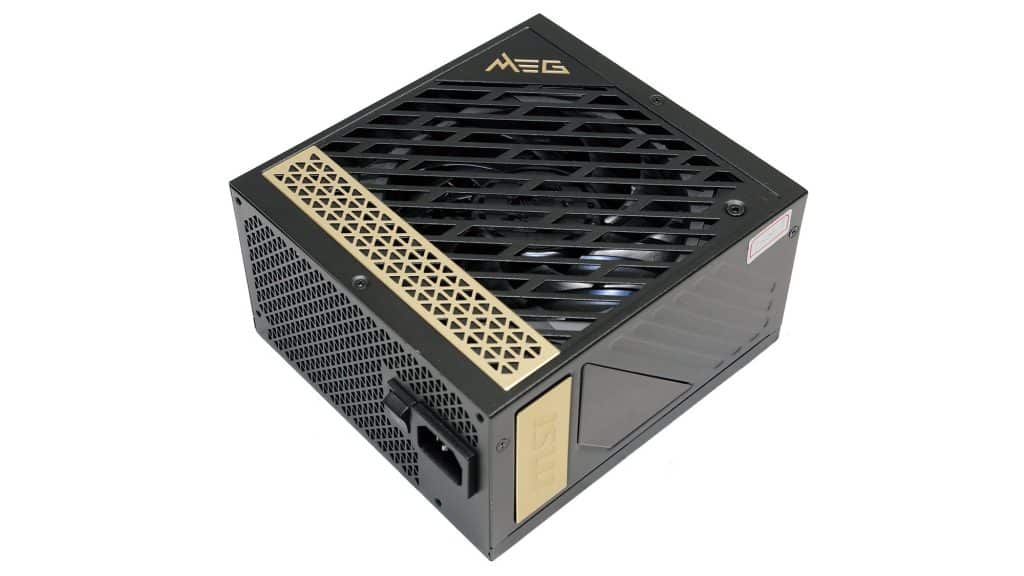


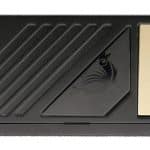

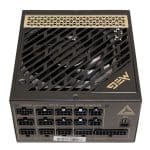
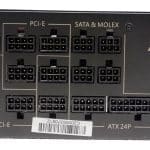
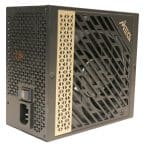
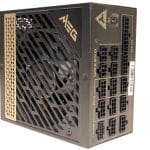
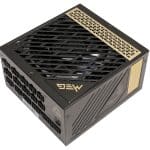
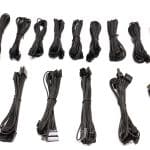
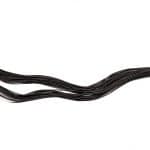
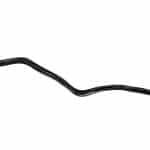



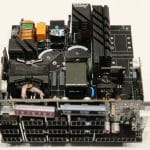


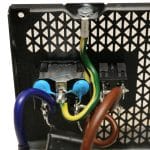

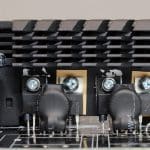
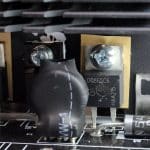
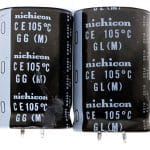
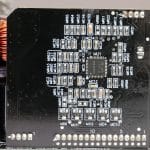
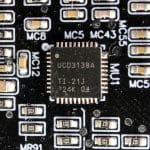
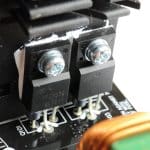


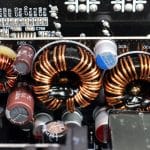
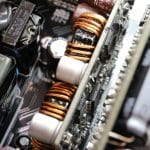
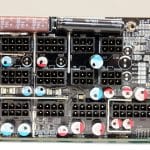

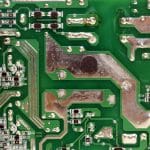

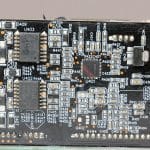
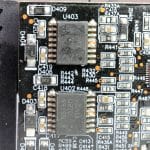
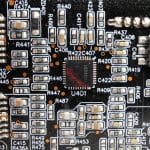

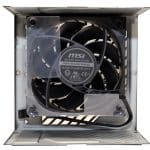
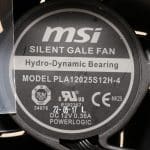
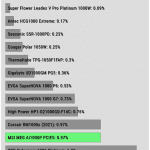


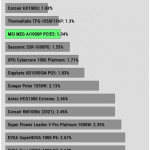
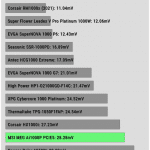
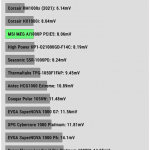
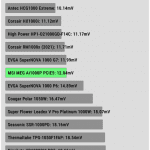

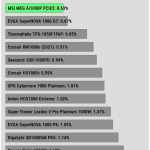
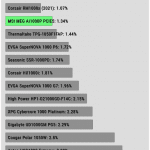
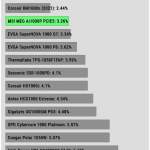
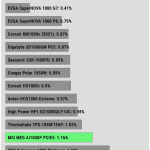

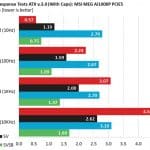
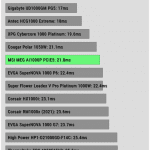
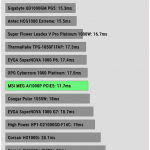
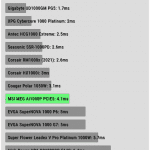

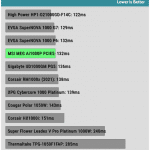
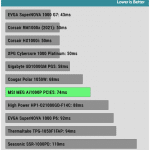

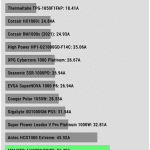
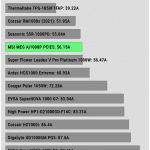
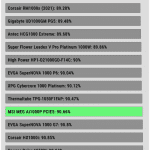
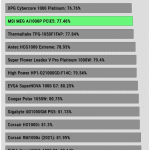
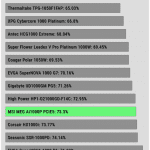
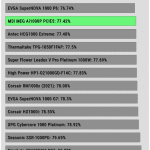


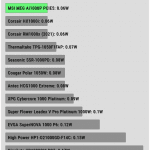

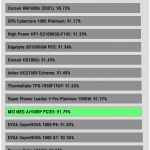
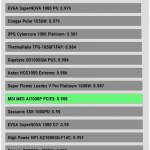
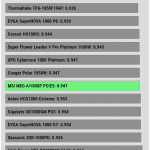
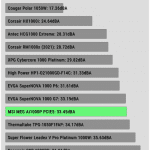
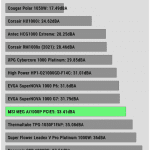
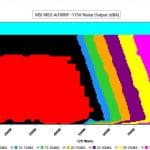
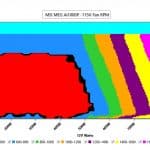
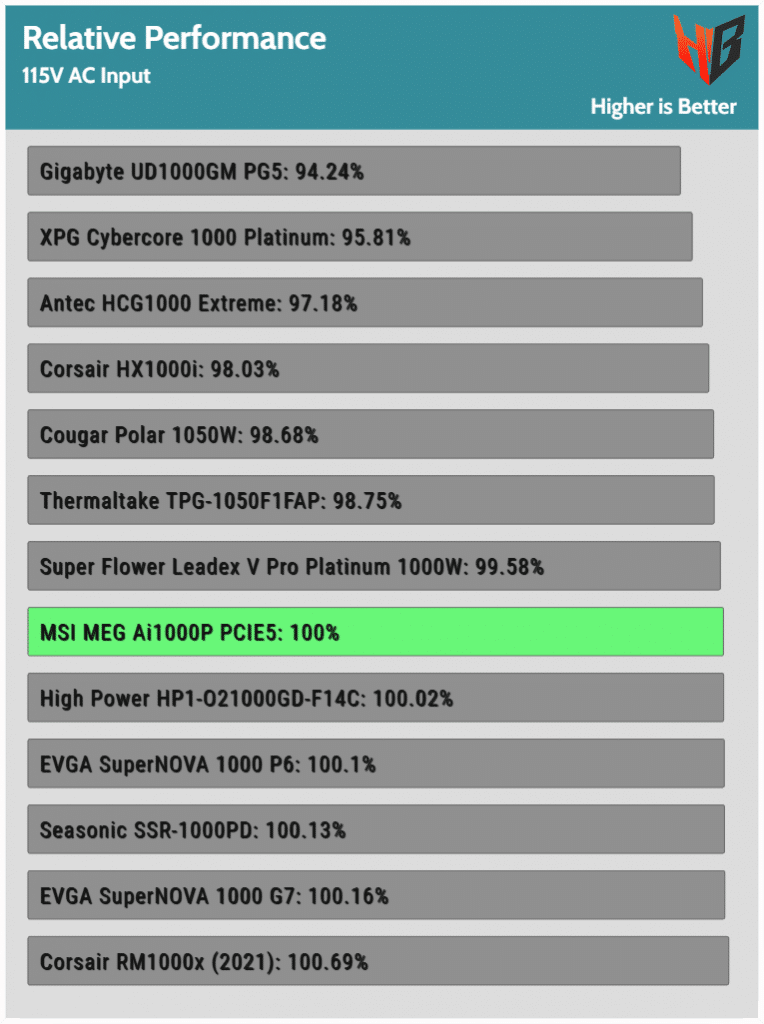
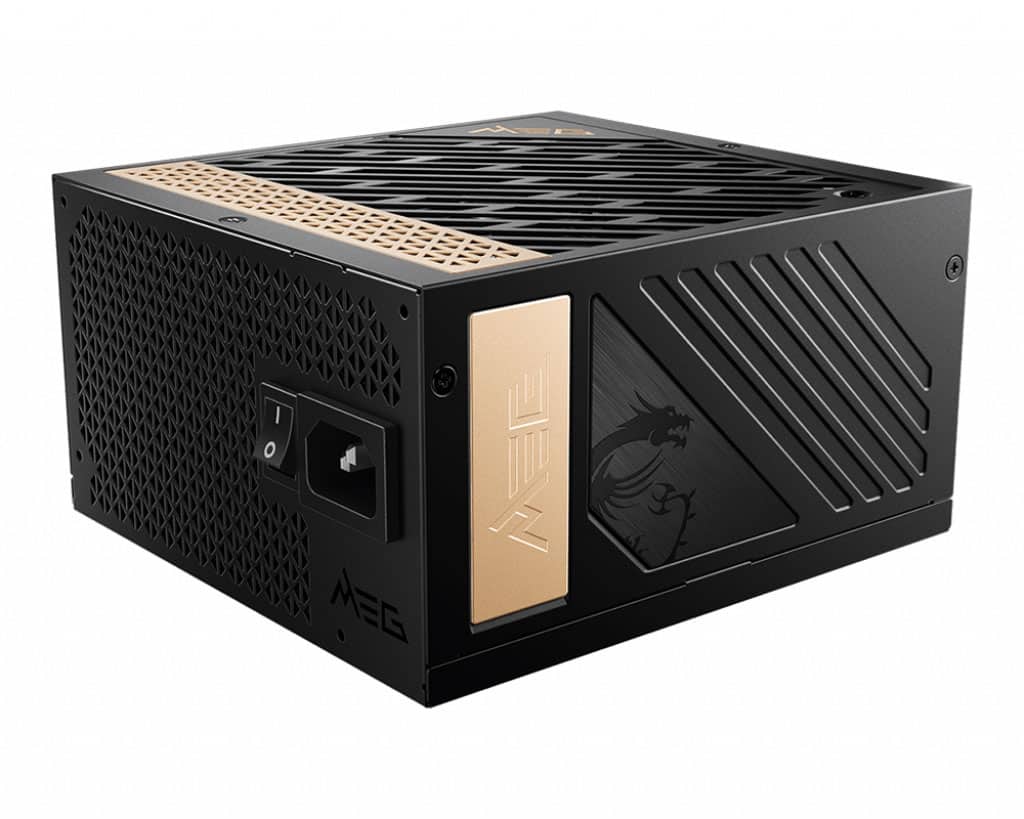

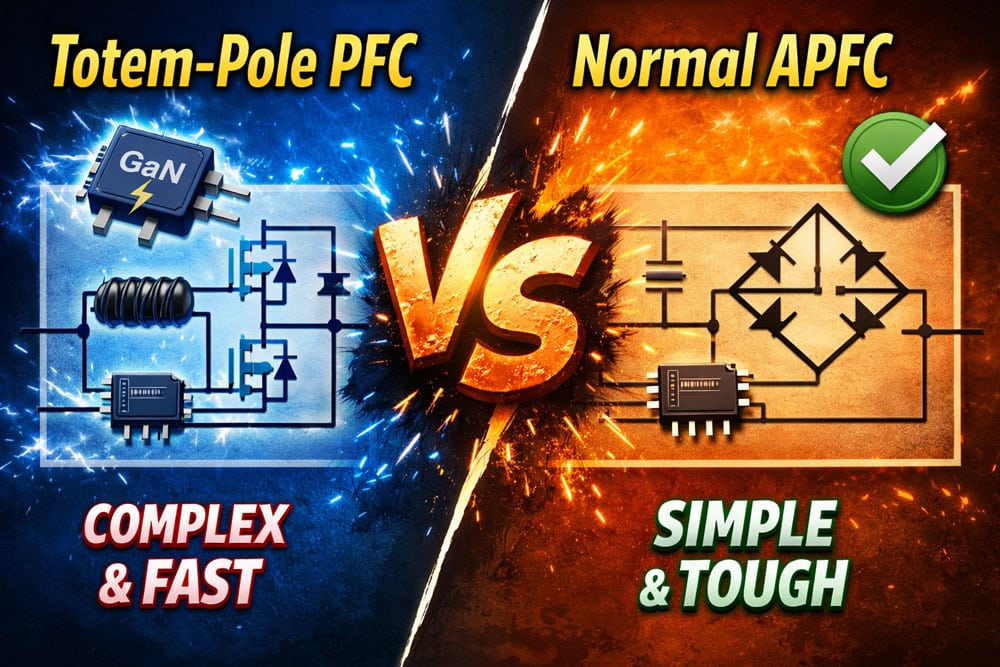
Hi!
It looks like the Cybenetics Report you refereed to at the beginning of the article contains an error regarding efficiency at 60 W load:
https://www.cybenetics.com/d/cybenetics_B0s.pdf
In the section “TESTS WITH LOAD 20-80W 230V” in the row “60W” you provide the following data:
Test – 60W
DC/AC (Watts) – 60.001 / 75.167
Efficiency – 74.838%
Obviously, the efficiency value was calculated incorrectly (lowered).
You’ve lost somewhere about 5% of an actual efficiency level.
Would you please to republish the Cybenetic Report with corrected data?
we will check it but average efficiency doesn’t calculate like that in our reports. We take the average from all readings, we don’t just calculate efficiency from the DC/AC watts. So, the average DC over the entire session is X W, and the average AC over the entire test session is Y W. We don’t say efficiency is X/Y, but we take the average efficiency readings from the entire test session again.
It is weird though because a 5% difference is high. Thank you!
Your defense of the incorrect efficiency calculation doesn’t seem very convincing.
If we make a simple comparison with similar (almost identical) devices built on the same CWT-CTT platform and having the same output power (just 2 examples):
XPG Cybercore II 1000 Platinum
https://www.cybenetics.com/d/cybenetics_eqb.pdf
60W – 60.001 W / 74.654 W – 80.363%
Deepcool PX1000P
https://www.cybenetics.com/d/cybenetics_ElG.pdf
60W – 59.987 W / 74.1 W – 80.562%
At this point, it appears that Cybenetics report for the MSI MEG Ai1000P is misleading potential buyers of the device by underestimating the device’s efficiency under light loads.
Similar devices from other manufacturers will look preferable to MSI if someone decides to buy a device based on this report.
and I think that you need to relax a bit ok? Go take a pill or something. I told you that we look into that and if there is indeed a problem our database analysts will fix it! I thanked you for spotting that, don’t make me feel bad about it.
Since the review mentions the fan noise (due to its smaller size), would it be easily feasible to replace it with a Noctua NF-A12x25 PWM?
It has a bit more static pressure at the top end (2.34 compared to 2.09 mmH2O) and since both are around 2000 rpm I doubt the m³/h (or CFM if you prefer) numbers are too far off of each other either.
Would reduce it from 33.6 to 22.6 dBA if you go by spec sheets.
Best regards!
In general I avoid recommending changing the fan in any PSU, since you have to do a detailed thermal analysis after you do that, to check thermals.
Would measuring where the temperature tops out with the stock fan and then with the Noctua while stress testing both CPU + GPU not enough?
At least MSI’s software would come in handy for something then ;).
Have you looked at the MSI entry level MPG ATX 3.0 power supplies?
I was hoping to get your opinion on their “ATX 3.0 Compatible” claim for the MPG A1000G PCIE5. It misses out on the T5 compliance, stating “80 % load”. You can see it here: https://www.msi.com/Landing/first-power-supply-unit-for-atx-3-pcie-5
I don’t really know what that means, does it make the MPG hard to recommend as a future proof ATX 3.0 PSU?
T5 is the power ok signal’s hold-up time. It doesn’t have to do with the ATX v3.0 transient tests, so no worries.
In other words, they used a low capacity bulk cap, to restrict the cost, so the hold-up time is low.